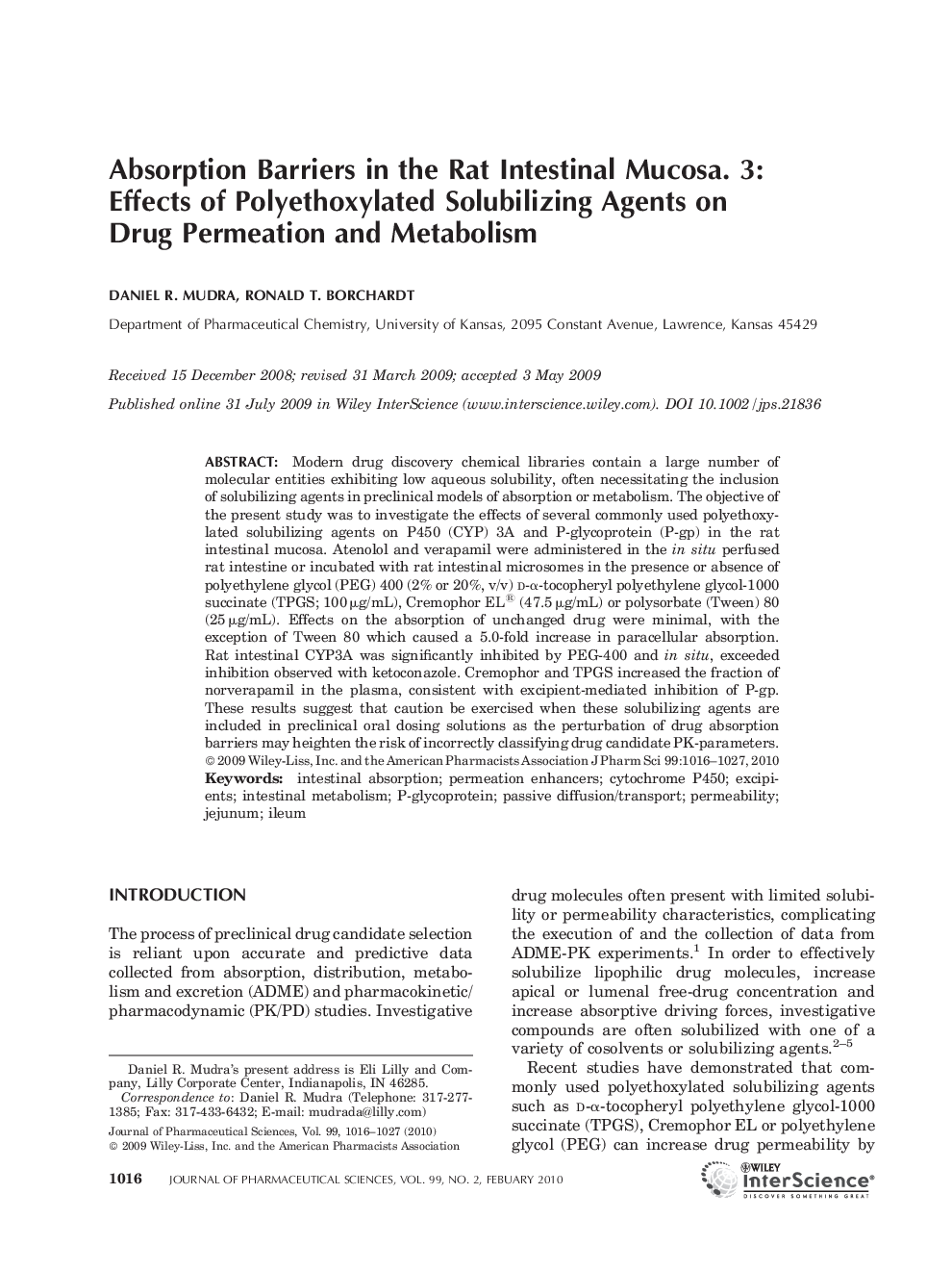| Article ID | Journal | Published Year | Pages | File Type |
|---|---|---|---|---|
| 2486502 | Journal of Pharmaceutical Sciences | 2010 | 12 Pages |
Abstract
Modern drug discovery chemical libraries contain a large number of molecular entities exhibiting low aqueous solubility, often necessitating the inclusion of solubilizing agents in preclinical models of absorption or metabolism. The objective of the present study was to investigate the effects of several commonly used polyethoxylated solubilizing agents on P450 (CYP) 3A and P-glycoprotein (P-gp) in the rat intestinal mucosa. Atenolol and verapamil were administered in the in situ perfused rat intestine or incubated with rat intestinal microsomes in the presence or absence of polyethylene glycol (PEG) 400 (2% or 20%, v/v) D-α-tocopheryl polyethylene glycol-1000 succinate (TPGS; 100âµg/mL), Cremophor EL® (47.5âµg/mL) or polysorbate (Tween) 80 (25âµg/mL). Effects on the absorption of unchanged drug were minimal, with the exception of Tween 80 which caused a 5.0-fold increase in paracellular absorption. Rat intestinal CYP3A was significantly inhibited by PEG-400 and in situ, exceeded inhibition observed with ketoconazole. Cremophor and TPGS increased the fraction of norverapamil in the plasma, consistent with excipient-mediated inhibition of P-gp. These results suggest that caution be exercised when these solubilizing agents are included in preclinical oral dosing solutions as the perturbation of drug absorption barriers may heighten the risk of incorrectly classifying drug candidate PK-parameters. © 2009 Wiley-Liss, Inc. and the American Pharmacists Association J Pharm Sci 99:1016-1027, 2010
Keywords
Related Topics
Health Sciences
Pharmacology, Toxicology and Pharmaceutical Science
Drug Discovery
Authors
Daniel R. Mudra, Ronald T. Borchardt,
